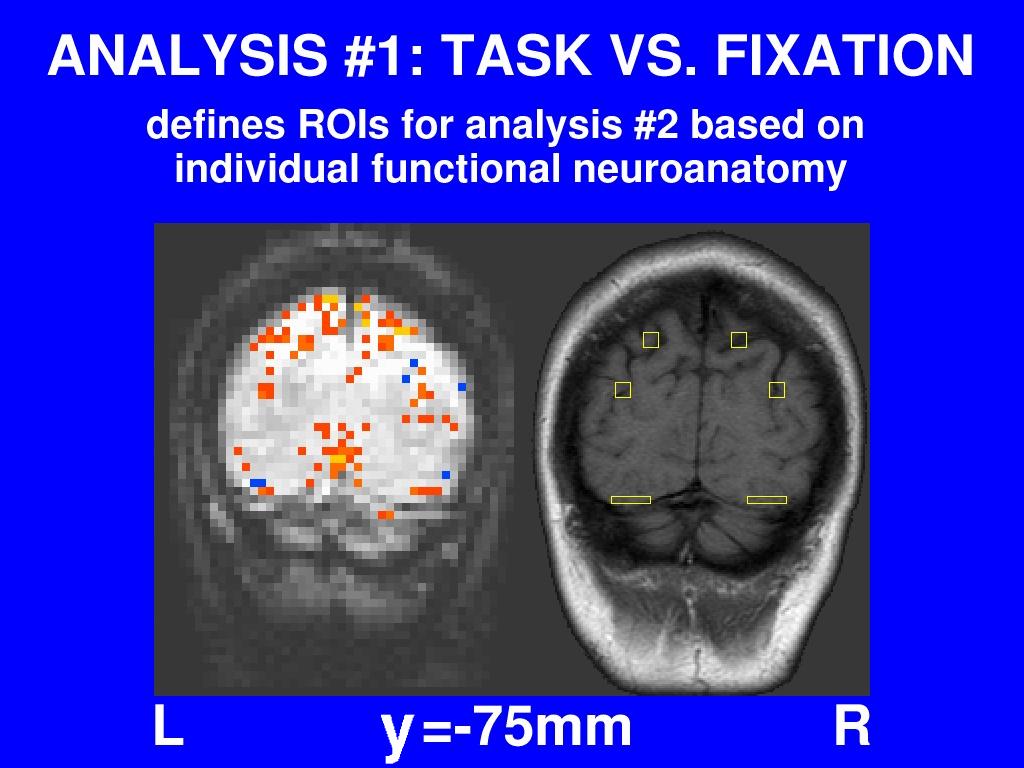

The purpose of our first analysis, task versus fixation, was to map within each individual subject the regions that were activated during the task. This analysis was performed using a permutation test that we've implemented and released as part of the AFNI software package.
Here in a typical subject you can see task activations in ventral occipital cortex and intraparietal sulcus, and the regions of interest drawn to match those activations. Note that although these regions are being constructed on the basis of Analysis #1, they are being drawn a priori to Analysis #2. Although drawing regions within individuals is more labour-intensive than computing everything on a Talairach-transformed average brain, given the very small attentional effect sizes that we're looking at, and also the large degree of individual variability of the anatomy, this technique is essential. The intraparietal activation in this paradigm, in particular, is of such a low magnitude that it likely would not survive spatial blurring.
![[previous]](../left_arrow.gif) |
![[contents]](../up_arrow.gif) |
![[next]](../right_arrow.gif) |